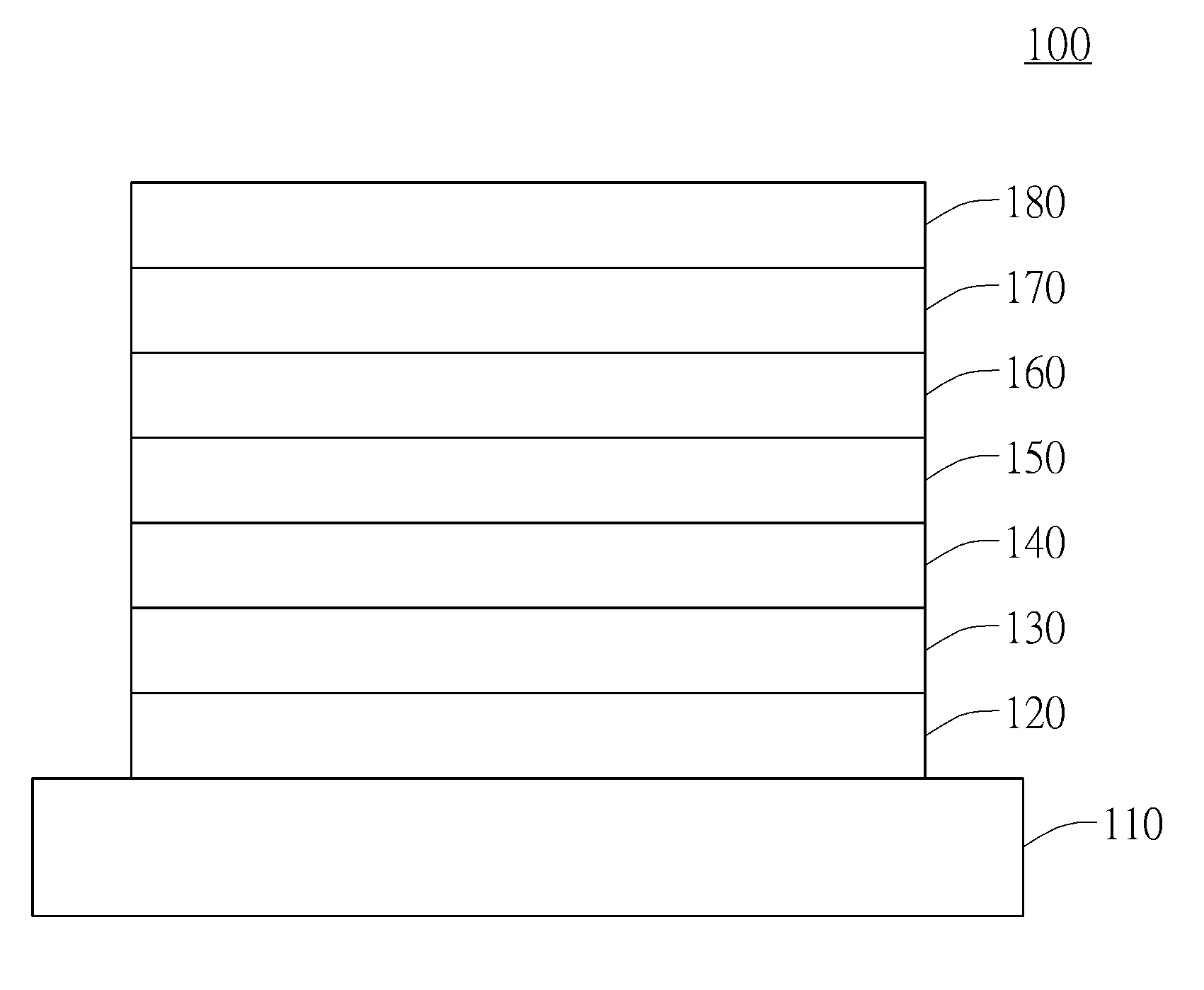Compound for organic electroluminescent device and organic electroluminescent device having the same
a technology of electroluminescent devices and organic electroluminescent devices, which is applied in the direction of discharge tube luminescnet screens, anthracene dyes, natural mineral layered products, etc., can solve the problems of reducing the luminous efficiency, affecting the selection of host materials in phosphorescent oleds, and affecting the luminous efficiency of the phosphorescent oleds
- Summary
- Abstract
- Description
- Claims
- Application Information
AI Technical Summary
Benefits of technology
Problems solved by technology
Method used
Image
Examples
synthesis example 1
Synthesis of Compound 1-1
[0118]A mixture of 2.0 g of 9-acetyl-3,6-diiodocarbazole and 1.1 g of carbazole were stirred together in 20 ml N,N′-dimethylacetamide. To this was added 0.8 g of copper oxide and heated to 170° C. for 24 h. The reaction was quenched with water and the solid was filtered, washed with methanol, and dried under vacuum. The solid (3 g) was then taken up for further deprotection using 0.6 g KOH with THF (3 ml), methanol (6 ml) and water (6 ml) at reflux temperature. The reaction mixture was then extracted using ethyl acetate; and the organic layer was dried over anhydrous sodium sulfate and evaporated to dryness under vacuum. Subsequent silica gel column chromatography using toluene:hexane (1:2) as eluent, yielded 1.5 g of 3,6-dicarbazolylcarbazole.
[0119]The above obtained 3,6-di(9-carbazolyl)carbazole (1.5 g) was dissolved in 30 ml of dry N,N′-dimethylformamide under nitrogen. 0.15 g of sodium hydride was added and stirred at room temperature for 1 h. A solution...
synthesis example 2
Synthesis of Compound 3-1
[0122]A mixture of 2.0 g of 9-acetyl-3,6-diiodocarbazole and 3.0 g of N-phenylindolo[2,3-a]carbazole (IC-1) were stirred together in 20 ml N,N′-dimethylacetamide. To this was added 0.8 g of copper oxide and heated to 170° C. for 24 h. The reaction was quenched with water and the solid was filtered, washed with methanol, and dried under vacuum. The solid (4.5 g) was then taken up for further deprotection using 0.8 g KOH with THF (4 ml), methanol (8 ml) and water (8 ml) at reflux temperature. The reaction mixture was then extracted using ethyl acetate; and the organic layer was dried over anhydrous sodium sulfate and evaporated to dryness under vacuum. Subsequent silica gel column chromatography using toluene:hexane (1:2) as eluent, yielded 2.8 g of 3,6-bis(N-phenyindolo[2,3-a]lcarbazolyl)carbazole as a yellow solid.
[0123]The above obtained 3,6-bis(N-phenyindolo[2,3-a]lcarbazolyl)carbazole (2.8 g) was dissolved in 50 ml of dry N,N′-dimethylformamide under nitr...
synthesis example 3
Synthesis of Compound 3-8
[0126]A mixture of 2.0 g of 9-acetyl-3-bromocarbazole prepared as described above and 2.4 g of N-phenylindolo[2,3-a]carbazole (IC-1) were stirred together in 20 ml N,N′-dimethylacetamide. To this was added 0.8 g of copper oxide and heated to 170° C. for 24 h. The reaction was quenched with water and the solid was filtered, washed with methanol, and dried under vacuum. The solid (4.5 g) was then taken up for further deprotection using 0.8 g KOH with THF (4 ml), methanol (8 ml) and water (8 ml) at reflux temperature. The reaction mixture was then extracted using ethylacetate; and the organic layer was dried over anhydrous sodium sulfate and evaporated to dryness under vacuum. Subsequent silica gel column chromatography using toluene:hexane (1:2) as eluent, yielded 2.9 g of 3-(N-phenyindolo[2,3-a]carbazolyl)carbazole as a light yellow solid.
[0127]The above obtained 3-(N-phenyindolo[2,3-a]lcarbazolyl)carbazole (2.9 g) was dissolved in 50 ml of dry N,N′-dimethylf...
PUM
| Property | Measurement | Unit |
|---|---|---|
| time | aaaaa | aaaaa |
| emission area | aaaaa | aaaaa |
| luminance | aaaaa | aaaaa |
Abstract
Description
Claims
Application Information
 Login to View More
Login to View More - R&D
- Intellectual Property
- Life Sciences
- Materials
- Tech Scout
- Unparalleled Data Quality
- Higher Quality Content
- 60% Fewer Hallucinations
Browse by: Latest US Patents, China's latest patents, Technical Efficacy Thesaurus, Application Domain, Technology Topic, Popular Technical Reports.
© 2025 PatSnap. All rights reserved.Legal|Privacy policy|Modern Slavery Act Transparency Statement|Sitemap|About US| Contact US: help@patsnap.com



